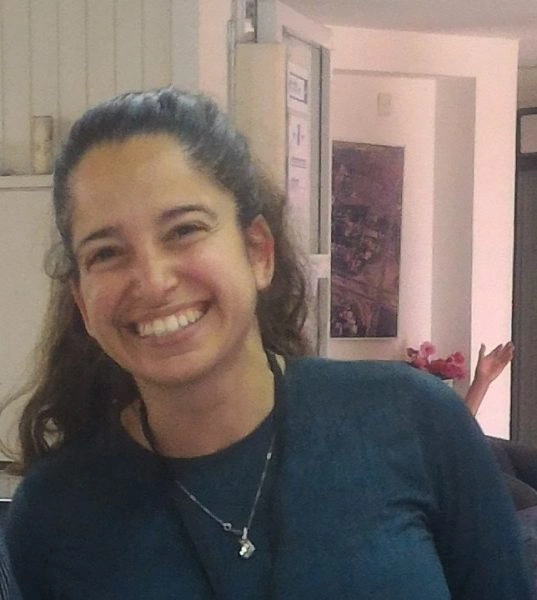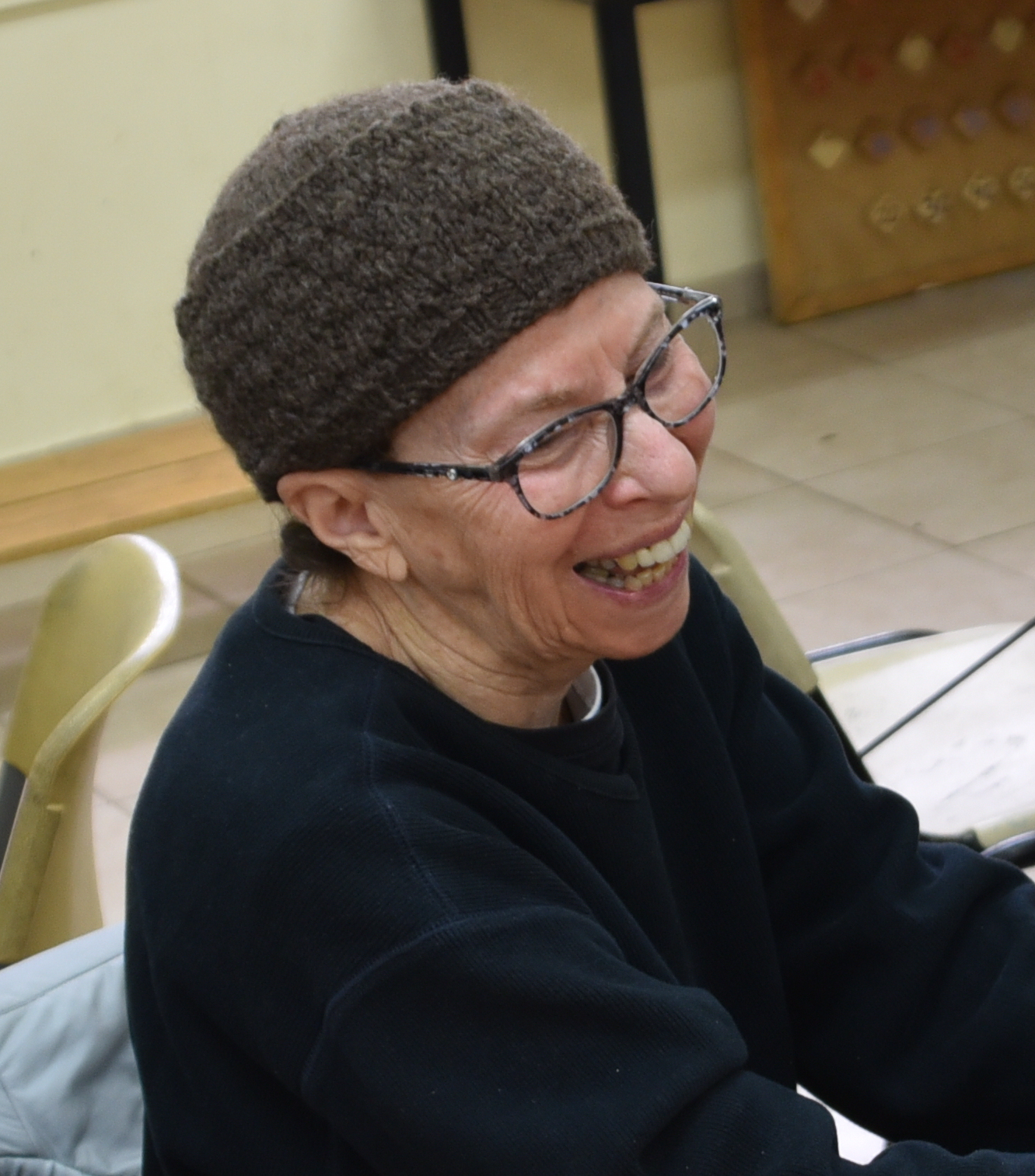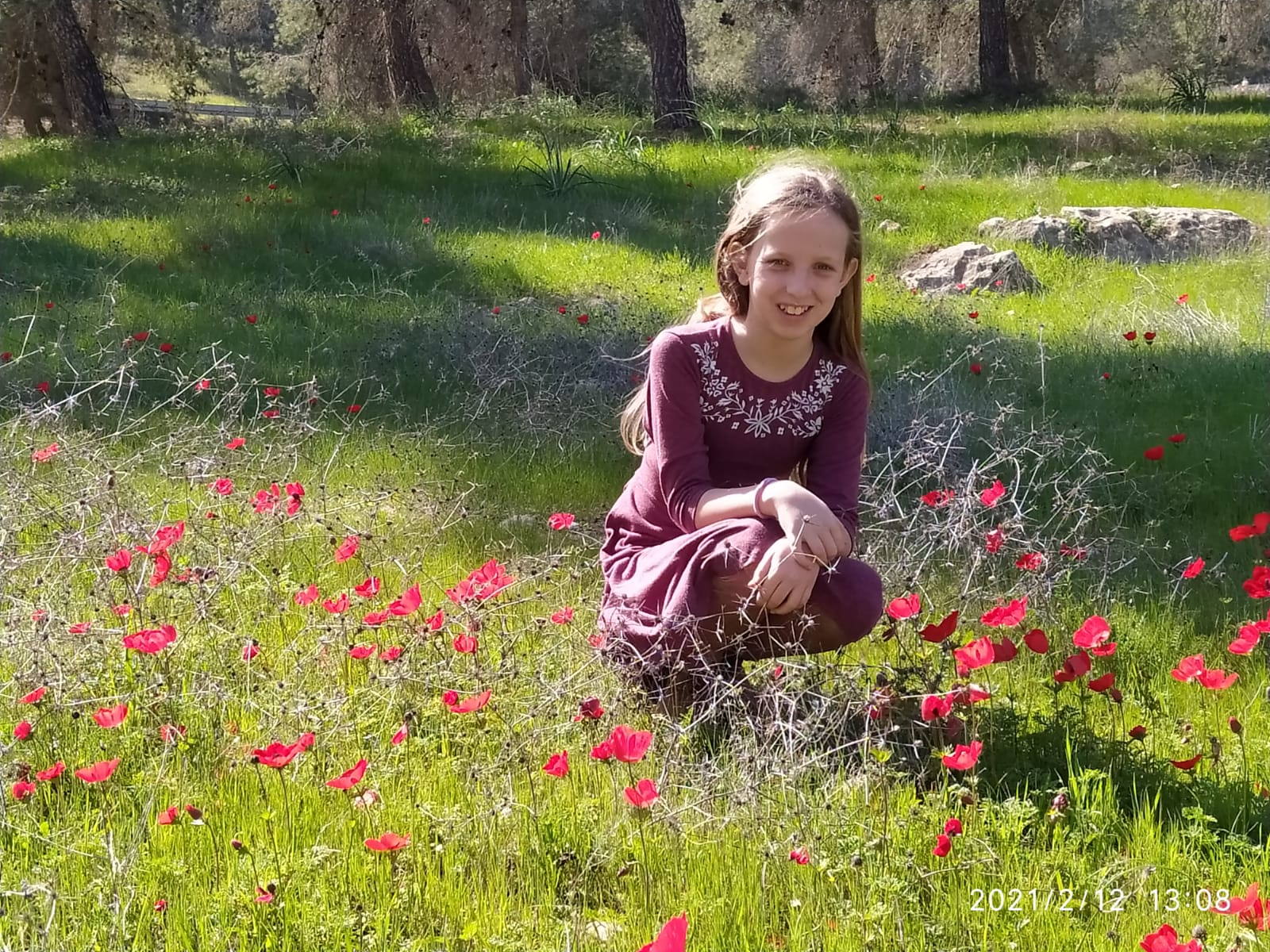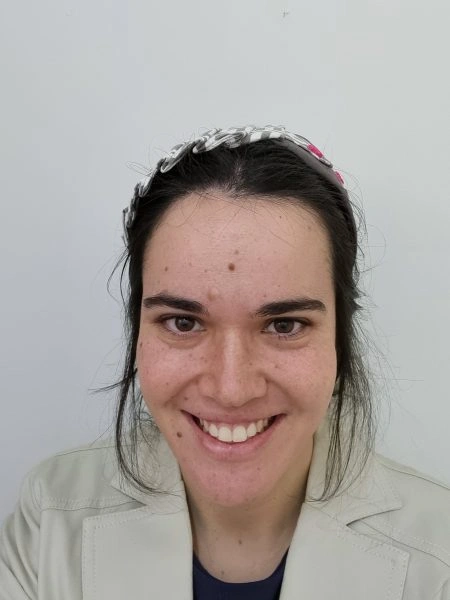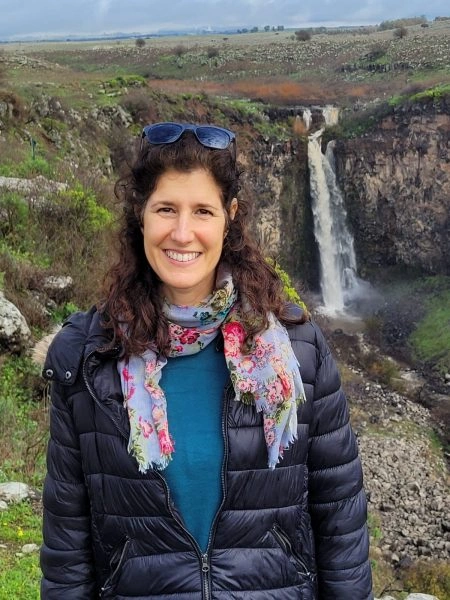הגמרא מסיימת את הדיונים על עופות ועוברת לחגבים – מהם סימנים של חגבים טהורים?
לימוד השבוע מוקדש ע”י טינה לם לע”נ יצחק מאיר בן הרב צבי אריה ואסתר בתיה.
רוצים להקדיש למידה? התחל כאן:
לימוד השבוע מוקדש ע”י טינה לם לע”נ יצחק מאיר בן הרב צבי אריה ואסתר בתיה.
העמקה
רוצה להבין מה באמת קורה מתחת לפני השטח של הסוגיה?
שיעורים, פודקאסטים והרחבות של מיטב המורות שלנו יפתחו לך עוד זוויות וכיווני חשיבה.
חדשה בלימוד הגמרא?
זה הדף הראשון שלך? איזו התרגשות עצומה! יש לנו בדיוק את התכנים והכלים שיעזרו לך לעשות את הצעדים הראשונים ללמידה בקצב וברמה שלך, כך תוכלי להרגיש בנוח גם בתוך הסוגיות המורכבות ומאתגרות.
פסיפס הלומדות שלנו
גלי את קהילת הלומדות שלנו, מגוון נשים, רקעים וסיפורים. כולן חלק מתנועה ומסע מרגש ועוצמתי.
חולין סה
בתרתי תיבות ש”מ תרי שמות נינהו
into two words, conclude from it that they are two names, prohibiting the egg as well.
אלא מעתה (בראשית יד, ד) את כדר לעומר דפסק להו ספרא בתרי הכי נמי דתרתי שמי נינהו אמרי התם בשתי תיבות פסיק להו בשני שיטין לא פסיק להו אבל הכא אפי’ בשני שיטין נמי פסיק להו:
The Gemara asks: If that is so, what about the name: “Chedorlaomer” (Genesis 14:4), which the scribe splits in two so that it appears as: Chedor Laomer? Is it also true there that they are two names? The verse is clearly referring to only one person. They say in response: There, with regard to Chedor Laomer, the scribe splits the name into two words, but he may not split it into two lines if the first half nears the end of one line. But here, he may split the name bat ya’ana even into two lines, indicating that they are completely separate.
אבל אמרו חכמים כל עוף [וכו’]: תניא רבן גמליאל אומר דורס ואוכל בידוע שהוא טמא יש לו אצבע יתירה וזפק וקרקבנו נקלף בידוע שהוא טהור ר”א בר’ צדוק אומר מותחין לו חוט של משיחה אם חולק את רגליו שתים לכאן ושתים לכאן טמא שלש לכאן ואחת לכאן טהור ר”ש בן אלעזר אומר כל עוף הקולט מן האויר טמא
§ The mishna states: But the Sages stated that any bird that claws its prey and eats it is non-kosher. It is taught in a baraita: Rabban Gamliel says: A bird that claws its prey and eats it is certainly non-kosher. If it has an extra digit and a crop, and its gizzard can be peeled, it is certainly kosher. Rabbi Elazar, son of Rabbi Tzadok, says: One stretches a line, and the bird perches on it. If it splits its feet on the line, with two digits here and two there, it is non-kosher. If it places three digits here and one there, it is possibly kosher. Rabbi Shimon ben Elazar says: Any bird that catches food out of the air is non-kosher.
ציפרתא נמי מקלט קלטה אמר אביי קולט ואוכל קאמרי
The Gemara interjects: But the tziparta also catches food out of the air, and it is kosher. Abaye said: We say this only for a bird that both catches and eats its food in the air. The tziparta lands before eating what it has caught.
אחרים אומרים שכן עם טמאים טמא עם טהורים טהור
The baraita concludes: Others say: If a bird dwells with non-kosher birds, it is non-kosher; if it dwells with kosher birds, it is kosher.
כמאן כר’ אליעזר דתניא ר”א אומר לא לחנם הלך זרזיר אצל עורב אלא מפני שהוא מינו אפי’ תימא רבנן שכן ונדמה קאמרינן:
The Gemara asks: In accordance with whose opinion is this last statement? Perhaps it is in accordance with the opinion of Rabbi Eliezer, as it is taught in a baraita: Rabbi Eliezer says: It was not for naught that the zarzir went to dwell with the crow, but because it is of the same species. The Gemara rejects this: You may even say that the opinion introduced with the words: Others say, is like that of the Rabbis, who disagree with Rabbi Eliezer and deem the zarzir kosher. The statement introduced with the words: Others say, is understood as follows: We say that a bird is non-kosher whenever it both dwells with a non-kosher bird and resembles it. The zarzir, though, does not resemble the crow.
ובחגבים כל שיש לו כו’: מאי רובו אמר רב יהודה אמר רב רוב ארכו ואמרי לה רוב הקיפו אמר רב פפא הלכך בעינן רוב ארכו ובעינן רוב הקיפו
§ The mishna states: And with regard to grasshoppers, any grasshopper that has four legs, and four wings, and two additional jumping legs, and whose wings cover most of its body, is kosher. The Gemara asks: What is considered most of its body? Rav Yehuda said that Rav said: Most of its length. And some say that he said: Most of its circumference. Rav Pappa said: Therefore, one must satisfy both versions of the statement. We require that the wings cover most of its length, and we also require that they cover most of its circumference.
ת”ר אין לו עכשיו ועתיד לגדל לאחר זמן כגון הזחל מותר ר”א בר’ יוסי אומר (ויקרא יא, כא) אשר לא כרעים אף על פי שאין לו עכשיו ועתיד לגדל לאחר זמן מאי זחל אמר אביי אסקרין
The Sages taught in a baraita: A grasshopper that has no wings now but will grow them after a time, e.g., the zaḥal, is permitted. Rabbi Elazar, son of Rabbi Yosei, says: The verse states: “Yet these may you eat of all winged swarming things that go upon all fours, which have [lo] jointed legs above their feet, wherewith to leap upon the earth” (Leviticus 11:21). The word lo is written with the letter alef, meaning not, so that it can be understood as: Do not have jointed legs. This teaches that even though it has no jointed legs now but will grow them after a time, it is still kosher. The Gemara asks: What is the zaḥal? Abaye said: It is called askarin in Aramaic.
ת”ר (ויקרא יא, כב) את אלה מהם תאכלו את הארבה וגו’ ארבה זה גובאי סלעם זה רשון חרגול זה ניפול חגב זה גדיאן מה ת”ל (ויקרא יא, טו) למינו למינהו למינהו למינהו ד’ פעמים להביא ציפורת כרמים ויוחנא ירושלמית והערצוביא והרזבנית
The Sages taught in a baraita that the verse states: “These of them you may eat: The arbeh after its kinds, and the solam after its kinds, and the ḥargol after its kinds, and the ḥagav after its kinds” (Leviticus 11:22). The arbeh is the insect known as the govai. The solam is the rashon. The ḥargol is the nippul. The ḥagav is the gadyan. Why must the verse state: “After its kinds,” “after its kinds,” “after its kinds,” and “after its kinds,” four times? It is to include four similar species: The vineyard bird, and the Jerusalem yoḥana, and the artzuveya, and the razbanit, which are also kosher.
דבי ר’ ישמעאל תנא אלו כללי כללות ואלו פרטי פרטות ארבה זה גובאי למינו להביא
The school of Rabbi Yishmael taught: These appearances of the phrase “after its kinds” in the verse are generalizations, and these species mentioned explicitly are details. The verse must be understood in light of the previous verse, which offers general signs of a kosher grasshopper. The two verses together are a generalization, and a detail, and a generalization, in the following manner: The first verse is a generalization, arbeh is a detail referring to the species govai, and the phrase “after its kinds” is another generalization. According to Rabbi Yishmael’s hermeneutical principles, the second generalization serves to include a case similar to the detail. In this case, the phrase “after its kinds” serves to include
ציפורת כרמים
the vineyard bird, which is similar to the arbeh in that its forehead is not smooth but has small hairs.
אין לי אלא הבא ואין לו גבחת הבא ויש לו גבחת מנין ת”ל (ויקרא יא, כב) סלעם זה ניפול למינהו להביא את האושכף
I have derived only that a species that comes before a person and does not have a smooth forehead is kosher. From where is it derived that even one that comes before a person and has a smooth forehead is kosher? The verse states: “Solam,” and this is the nippul, which has a smooth forehead. The phrase “after its kinds” that follows solam is another generalization, which serves to include a case similar to the detail, i.e., the ushkaf, which has a smooth forehead like the solam.
ואין לי אלא הבא ואין לו גבחת הבא ויש לו גבחת הבא ואין לו זנב הבא ויש לו זנב מנין ת”ל חרגול זה רשון למינהו להביא את הכרספת ואת השחלנית
And I have derived only that a species that comes before a person and does not have a smooth forehead, like the arbeh, or one that comes before a person and has a smooth forehead, like the solam, or one that comes before a person and has no tail, is kosher, since none of the previously mentioned grasshoppers have a tail. From where is it derived that even one that comes before a person and has a tail is kosher? The verse states: “Ḥargol,” and this is the rashon, which has a tail. The phrase “after its kinds” that follows ḥargol is another generalization, and it serves to include the karsefet and the shaḥlanit, which also have tails.
ואין לי אלא הבא ואין לו גבחת הבא ויש לו גבחת הבא ואין לו זנב הבא ויש לו זנב הבא ואין ראשו ארוך הבא וראשו ארוך מנין
And I have derived only that a species that comes before a person and does not have a smooth forehead, or that comes before a person and has a smooth forehead, or that comes and has no tail, or that comes and has a tail, or that comes and its head is not long, is kosher, since every grasshopper mentioned until this point does not have a long head. From where is it derived that even one that comes and its head is long is kosher?
אמרת הרי אתה דן בנין אב משלשתן לא ראי ארבה כראי חרגול ולא ראי חרגול כראי ארבה ולא ראי שניהם כראי סלעם ולא ראי סלעם כראי שניהם הצד השוה שבהן שיש לו ד’ רגלים וארבע כנפים וקרצולים וכנפיו חופין את רובו אף כל שיש לו ארבע רגלים וארבע כנפים וקרצולים וכנפיו חופין את רובו
You will say: You derive a paradigm from the three of them, as follows: The aspect [re’i] of the arbeh, which has neither smooth forehead nor tail, is not similar to the aspect of the ḥargol, which has both; and the aspect of the ḥargol is not similar to the aspect of the arbeh. And the aspect of neither of them is similar to the aspect of the solam, which has a smooth forehead but no tail, and the aspect of the solam is similar to neither of their aspects. The characteristic that renders them all kosher can only be an aspect common to all of them. Their common denominator is that each has four legs, and four wings, and jumping legs, and its wings cover most of its body. So too, any other species that has four legs, and four wings, and jumping legs, and its wings cover most of its body is kosher, even if its head is long.
והלא הצרצור הזה יש לו ארבע רגלים וד’ כנפים וקרצולים וכנפיו חופין את רובו יכול יהא מותר ת”ל חגב ששמו חגב
One might ask: But doesn’t this tzartzur have four legs, and four wings, and jumping legs, and its wings cover most of its body? Consequently, one might have thought that it should be permitted. Therefore, the verse states: “Ḥagav,” to indicate that its name must be ḥagav. This includes all of the species previously mentioned, but not the tzartzur.
אי שמו חגב יכול אין בו כל הסימנין הללו ת”ל למינהו עד שיהא בו כל הסימנין הללו
But if its name must be ḥagav, one might have thought that any ḥagav is kosher, even if it does not have all these signs. Therefore, the verse states: “After its kinds,” indicating that even if it is called a ḥagav it is not kosher unless it has all these signs. This concludes the baraita of the school of Rabbi Yishmael.
פריך רב אחאי מה להנך שכן אין ראשן ארוך וכי תימא כיון דשוו בד’ סימנין מייתינן ולא פרכינן אי הכי חרגול נמי דשוו להו לא ליכתוב ותיתי מארבה וסלעם
Rav Aḥai refutes the baraita: The four signs listed are not the sole common denominators between the arbeh, ḥargol, and solam. What is also unique about these grasshoppers in addition to these signs? They are unique in that their heads are not long. If so, grasshoppers with long heads might not be kosher. And if you would say: Since they share these four signs, we include all others with these four signs and we do not refute them, since the included species need not be identical in all their aspects, if so, the Torah should not even write the ḥargol, which shares these four signs with the arbeh and the solam, and let it be derived that the ḥargol is kosher by inference from the common denominators between the arbeh and solam.
אלא איכא למיפרך מה להנך שכן אין להן זנב ה”נ איכא למיפרך מה להנך שכן אין ראשן ארוך
Rather, it was necessary for the verse to write ḥargol because if it were omitted, its inclusion could be refuted as follows: What is unique about these, the arbeh and solam? They are unique in that they both have no tail. Since the ḥargol has a tail, its kosher status cannot be inferred from theirs. So too, the inclusion of grasshoppers with long heads can be refuted as follows: What is unique about these, the arbeh, ḥargol, and solam? They are unique in that their heads are not long. If so, grasshoppers with long heads might not be kosher.
אלא אמר רב אחאי סלעם יתירא הוא לא ליכתוב רחמנא סלעם ותיתי מארבה ומחרגול דמאי פרכת מה לארבה דאין לו גבחת הרי חרגול דיש לו גבחת מה לחרגול דיש לו זנב הרי ארבה דאין לו זנב סלעם דכתב רחמנא ל”ל אם אינו ענין לגופו תנהו ענין לראשו ארוך
Rather, Rav Aḥai said: One can derive that grasshoppers with long heads are kosher as follows: The solam mentioned in the verse is redundant. How so? Let the Merciful One not write solam, and instead let it be derived by inference from the common denominators between the arbeh and ḥargol, that they have four legs, four wings, jumping legs, and that their wings cover most of their body. As what can you say to refute this? If you say: What can be derived from the arbeh, which, unlike the solam, does not have a smooth forehead; one can respond: But there is the ḥargol, which has a smooth forehead. And if you say: What can be derived from the ḥargol, which, unlike the solam, has a tail, one can respond: But there is the arbeh, which has no tail. If so, why do I need the solam that the Merciful One wrote? Rather, if the solam is not necessary for the matter itself, apply it to the matter of a long-headed grasshopper, to teach that it is kosher.




















